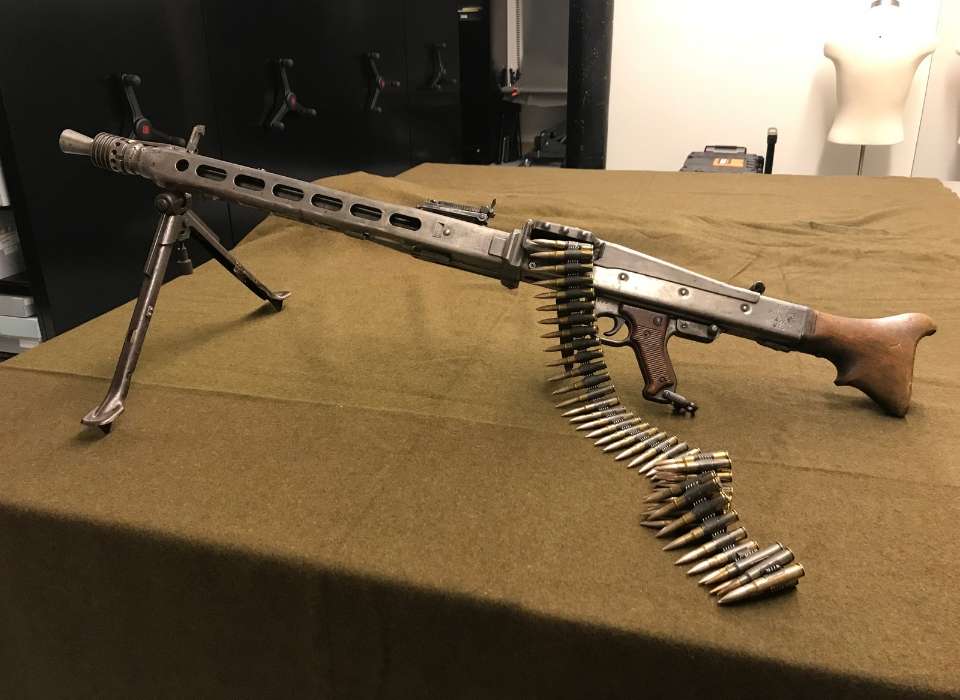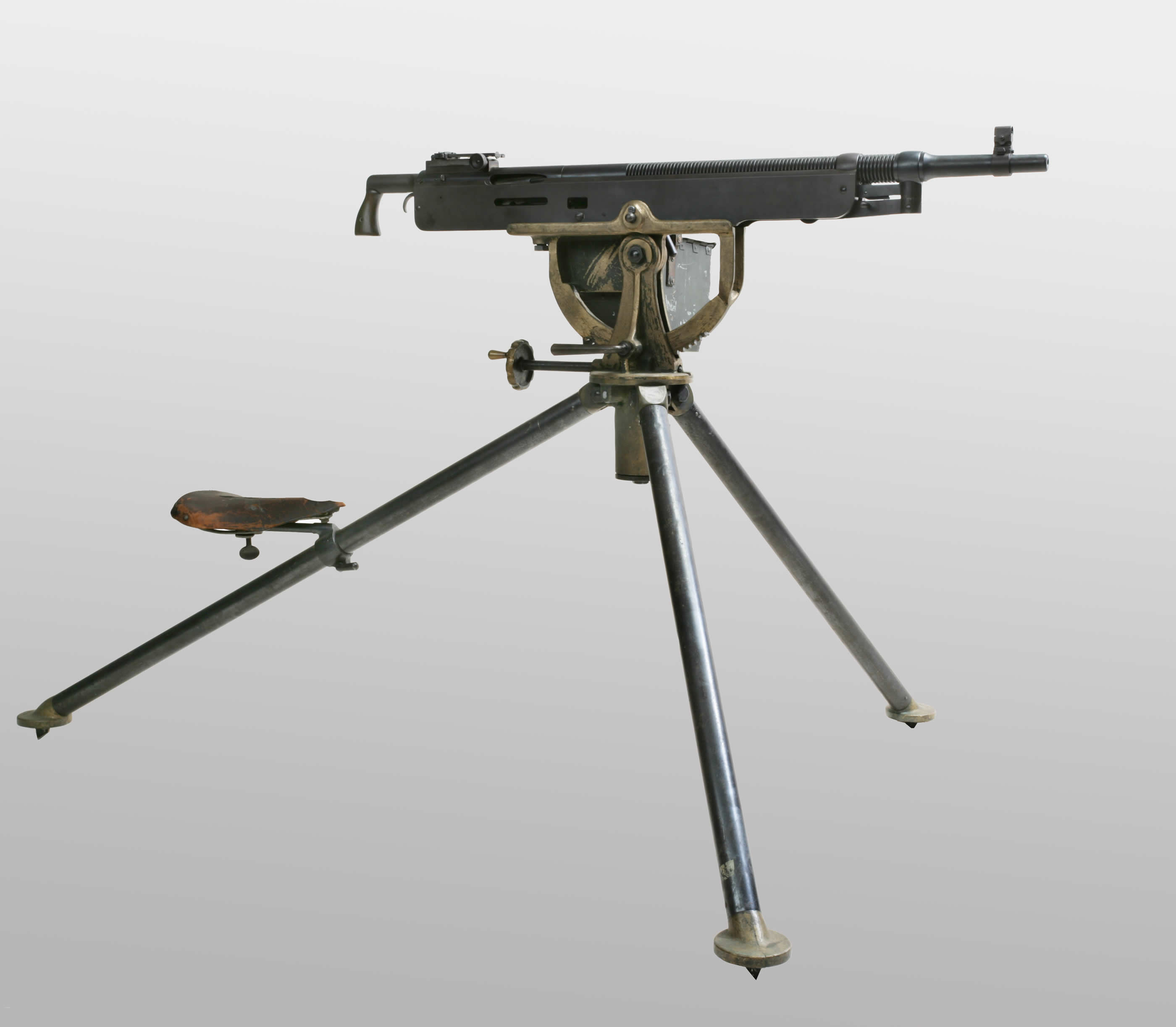Depending upon the gunner and conditions, a barrel modification might be needed as frequently as every 200 to 250 rounds. When the hot barrel was removed, it was reserved until it was cool enough to utilize once again. Machine-gun groups would have as lots of as 6 extra barrels on hand.
Driving through a just recently protected location in Belgium, the sharp-eyed Liniewski found the abandoned weapon in a field. Liniewski then did what any not being watched GI would have performed in that position; he stopped his truck and took the chance to snag a fantastic souvenir for the folks back home. As a support soldier, Liniewski was not familiar enough with weapons to disassemble his MG-42, so he hung on to it for a while up until he found a camp where German detainees of war were being held.
The weapon remained in the Liniewski family up until 2016 when his child Marty donated the weapon to the Museum. In spite of its propensity to get too hot, the MG-42 was an outstanding weapon that was light-years of ahead of the US equivalent, the Browning M-1919A4 machine weapon. Germany produced roughly 400,000 MG-42s throughout the war, some of which are still in active duty.

Taken together, all these weapons gave the Red Army a more useful variety of support weapons, much better able to challenge the Germans for fire superiority on the battlefield. Totally illustrated, this research study discusses the technology and the methods of these gatling gun. Kept in mind authority Chris Mc, Nab sets out how these gatling gun were distributed and tactically used and offers numerous examples of the weapons in action, from attack teams on the streets of Stalingrad to tank teams struggling for survival at Kursk.
Facts About The Five Worst Light Machine Guns (Lmgs) Revealed
Illustrated with high-quality photos and specifically commissioned artwork, this is a deep analysis of these vital tools of warfare within the Soviet forces.
Taken together, all these weapons offered the Red Army a more useful series of assistance weapons, much better able to challenge the Germans for fire superiority on the battlefield. Fully illustrated, this study explains the innovation and the techniques of these gatling gun. Noted authority Chris Mc, Nab sets out how these gatling gun were distributed and tactically used and offers various examples of the weapons in action, from assault teams on the streets of Stalingrad to tank crews struggling for survival at Kursk.
Illustrated with high-quality pictures and specially commissioned art work, this is a deep analysis of these essential tools of warfare within the Soviet forces.
The maker gun business, commanded by a captain, had an assigned strength of six commissioned officers and 172 employed men, and carried 16 weapons, four of which were spares. Within the business there were three squads and a headquarters area. A first lieutenant led the very first army, while 2nd lieutenants led platoons 2 and three.
What Does How The Machine Gun Changed Combat During World War I Mean?


Within each section were 2 gun teams, each with one gun and nine males, led by corporals. The weapon squad had one combat cart, pulled by a mule, to carry its weapon and ammunition as close to the firing position as enemy fire enabled. From there the teams moved the guns and ammo forward by hand.
The battalion had a strength of 16 officers and 377 employed males and was motorized. Nevertheless, it had just 2 companies, similar to the other gatling gun companies in regards to personnel and weapons. Each weapon team utilized a special motor cars and truck to transport its personnel, weapon and equipment. The battalion was normally in department reserve, prepared to perform objectives as the department commander bought.
In this function the weapons were placed 300 to 1000 meters to the rear of the cutting edge. When they employed their guns because style, the machine weapon officers typically ran into opposition from the rifle company leaders, who chose to have the guns farther forward, fearing that their infantrymen would be at risk of roaming low rounds as they advanced under the overhead maker gun fire.
They soon found that the maker guns were high priority targets for enemy fire, and that it was helpful to have the guns at some distance from the infantry positions. Because opponent gatling gun presented the biggest threat to the assaulting soldiers, the maker weapon teams strove to find the opponent guns and to focus their fire upon them.
The smart Trick of Wwi: Weapons: Central Powers That Nobody is Talking About
A proportion of the weapons was kept back as a reserve under command of the machine gun officer. 6Machine weapon tactical teaching dictated that in the defense the Hotchkiss guns must just rarely lie within 100 lawns of the cutting edge which at least two-thirds of the guns must be echeloned back through the entire protective position, located so that nearby weapons would be equally supporting.

7 To find other functions on the go to our THE DOUGHBOY CENTER wishes to constantly expand this function. Additions and talk about these pages might be directed to:.
I was impaled on this. My only fear was that he would push the trigger which would have made a hell of a mess. In the meantime, my sergeant who was near he saw me; was available in close; shot the fellow and after that hoisted me, with the aid of another guy, off the bayonet.
He was dead and it wasn't pleasant. A bayonet injury directly it enters it hurts and the withdrawal is probably even more distress than the 'putting in' due to the fact that the 'putting in' is immediate. Another kind of weapon was the trench club. These could be used on trench raids and in close quarter battling.